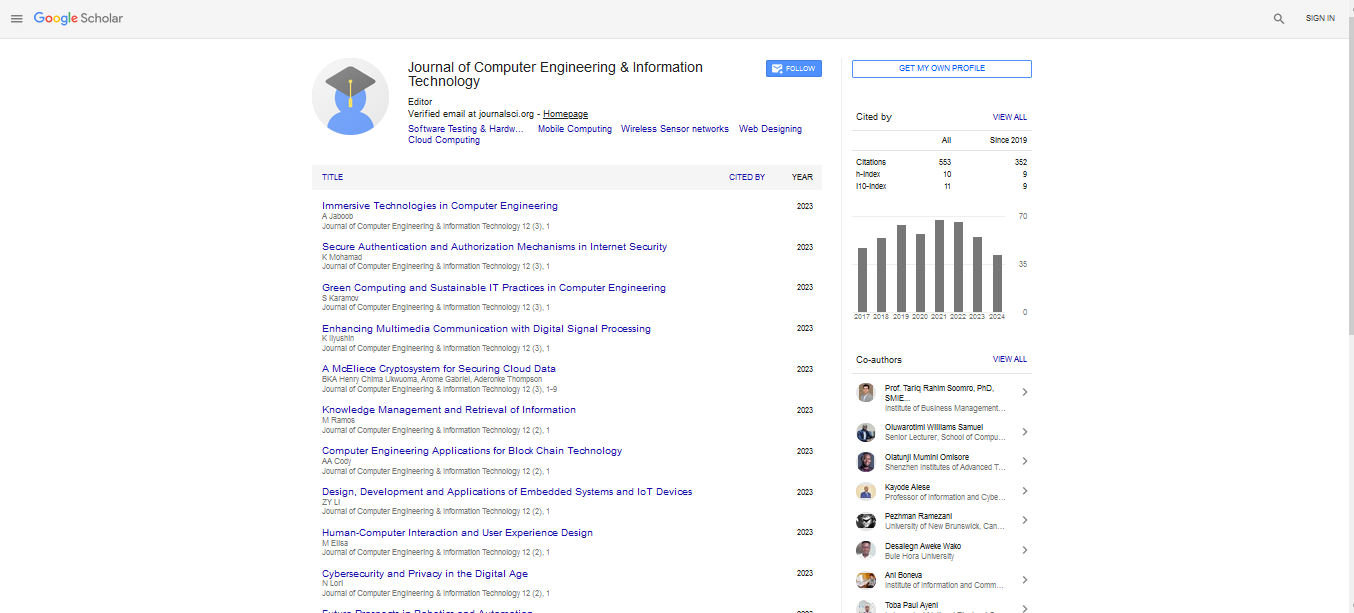Echo-guided filler in the face - A method to avoid adverse vascular events
Danilo Augusto Teixeira
Tropical Diseases Hospital in Goiânia, Brazil
: J Comput Eng Inf Technol
Abstract
Knowledge of facial anatomy is essential for professionals intending to inject hyaluronic acid (HA) into that region, but due to the considerable anatomical variations in region, it does not guarantee the complete safety of the procedure. Similarly, procedures widely disseminated among professionals, such as aspiration and the use of cannulas, do not ensure total safety against vascular occlusion events caused by the filler.For the last 4 years I am injecting hyaluronic acid into the face guided by Doppler ultrasonography (DUS) in order to ensure greater safety against vascular occlusion events secondary to the procedure.I have used 2 devices during this period, a Doppler ultrasound with a 18 MHZ transducer and another one with a 20 MHZ transducer. My technique consists of three steps: arterial mapping, real-time ultrasound-guided filling, and assessing the perfusion.The described technique was performed in more than 1000 patients and can be adopted in the routine of professionals who inject hyaluronic acid, especially in areas at high risk for vascular events. Its use results in greater safety against vascular occlusion events secondary to the procedure, without the need for prior aspiration. I conclude that there is a local vasodilation right after the filling that makes it difficult the possibility of extrinsic compression exerted by the filler on the vessel. Furthermore, the product moves to deep planes even with the bevel facing up (toward the epidermis).I believe that in the future the use of Doppler ultrasound-guided filling technique will be mandatory for professionals who intend to perform HA injection, to both ensure patient safety and provide legal protection for the professional. Recent Publications: 1. Phumyoo T, Jiirasutat N, Jitaree B, Rungsawang C, Uruwan S, Tansatit T. Anatomical and ultrasonography-based investigation to localize the arteries on the central forehead region during the glabellar augmentation procedure. Clin Anat. 2020;33(3):370-382. https://doi.org/10.1002/ca.23516 2. Lee W, Kim J-S, Moon H-J, Yang E-J.A safe doppler ultrasound-guided method for nasolabial fold correction with hyaluronic acid filler. Aesthet Surg J. 2021;41(6):NP486 .NP492.https://doi.org/10.1093/asj/sjaa153 3. Schelke LW, Velthuis P, Kadouch J, Swift A. Early ultrasound for diagnosis and treatment of vascular adverse events with hyaluronic acid fillers. J Am Acad Dermatol. 2019. S0190–9622(19):32392–8. https://doi.org/10.1016/j.jaad.2019.07.032 4. JaguÅ? D, Skrzypek E, Migda B, Woźniak W, Mlosek RK. Usefulness of Doppler sonography in aesthetic medicine. J Ultrason. 2021;20(83):e268-e272 5. Lee W, Kim J-S, Oh W, Koh I-S, Yang E-J. Nasal dorsum augmentation using soft tissue filler injection. J Cosmet Dermatol. 2019;18(5):1-7. https://doi.org/10.1111/jocd.13018.
Biography
Teixeria is Chief of the Dermatologic Surgery Department at Tropical Diseases Hospital in Goiânia, Brazil. He studied Dermatology at the Federal University of Goiás, Brazil. He completed fellowships in Dermatologic Surgery and Mohs Micrografic Surgery and received his Master’s degree in Dermatology in 2019. Since 2014 he is dermatologic surgery professor at Hospital of Tropical Diseases. In 2020, he published the first case of doppler ultrasound-guided volumizing of the glabella in the world. In 2021, he published a second article describing his technique of doppler ultrasound-guided volumizing.
 Spanish
Spanish  Chinese
Chinese  Russian
Russian  German
German  French
French  Japanese
Japanese  Portuguese
Portuguese  Hindi
Hindi 